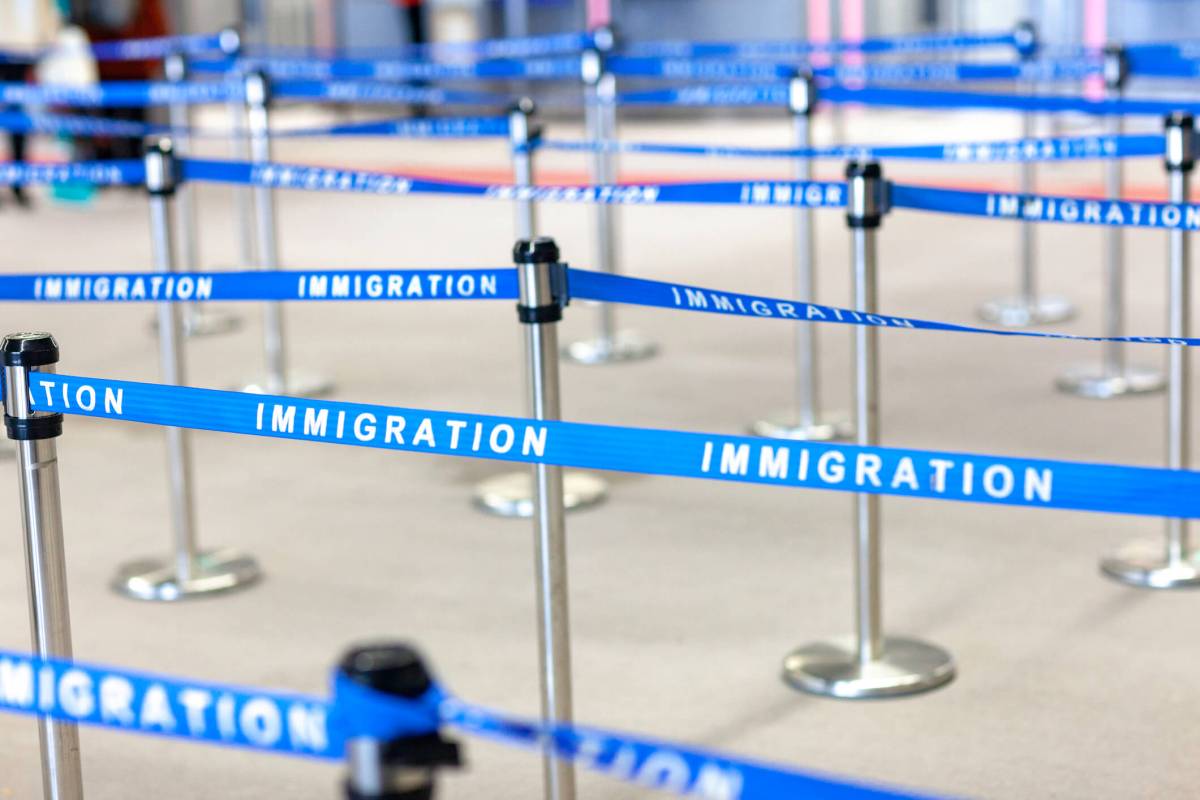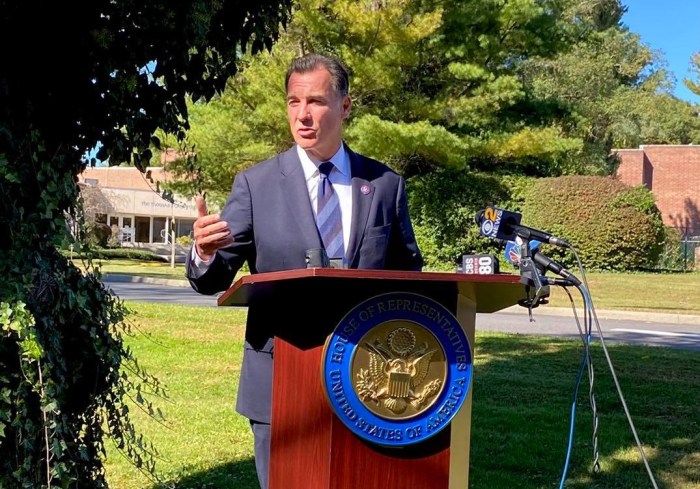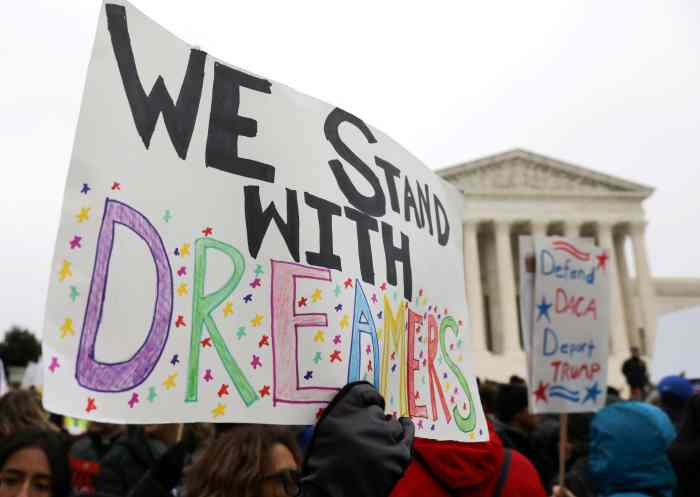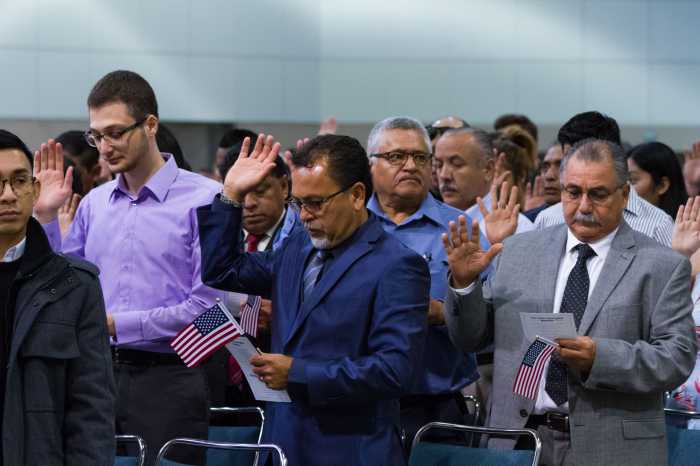For Long Island immigrants, the path to citizenship and to fight deportation is long and difficult, as legal resources are overwhelmed by an influx of cases.
On the 20th floor of the New York Broadway Immigration Court, a judge with long gray hair and bright red glasses addresses Ingrid, a short Latina woman sitting at the defendant’s table, who bounces her leg nervously.
“The purpose of this hearing is to decide whether or not you will be removed from the United States,” says Immigration Judge Andrea Koppenhofer, looking over her glasses at Ingrid. The interpreter repeats the sentence in Spanish and Ingrid quickly nods her head.
“You have the right to have an attorney and be represented, but at no cost to the government,” says Koppenhofer, again peering over her red frames. She continues to say that Ingrid will be granted a continuance to find an attorney and must return to court on May 20 to fight her case for asylum. The legal assistant hands the woman a list of low-cost and pro bono immigration attorneys. A child cries and Ingrid turns around to survey the people in the pews behind her awaiting their hearing: a single mother with an infant crying in her arms, a young woman and her sister clutching hands, two toddlers sitting in their parents’ laps, their eyes glued to iPhones, and an old man with a cane resting between his legs.
Ingrid turns back to the judge and tentatively speaks into the microphone, and the interpreter relays the message to the judge. Ingrid had called numerous pro bono legal organizations multiple times, but was told that due to the overwhelming number of people facing deportation, they could not help her. She did find a private attorney who would cost her $6,000, but she did not think that she would be able to raise that money by May 20. The judge granted her an extension of three months and she would be required to return on July 29 — with or without a lawyer.
Ingrid is one of many in New York State facing deportation who are struggling to acquire legal representation in removal hearings.
“Representation is the defining factor in an immigrant’s ability to avoid deportation and remain safely in the United States,” said Elise de Castillo, executive director of the nonprofit Central American Refugee Center (CARECEN), a Hempstead-based nonprofit that provides pro bono legal services to asylum seekers, offers community education, and advocates for changes. She says there is a great need on Long Island.
“We have the largest immigrant community in New York State outside of New York City,” she said, “but we have a fraction of the legal resources available in other parts of the state and that leaves over 500,000 immigrants on Long Island, many of whom are at risk for deportation, without representation.”
An overwhelming number of the unauthorized immigrants come from Latin America — about 71,000, according to the Migration Policy Institute. This is due to the inordinate amount of violence in those countries. According to CARECEN, Central America is one of the most dangerous places on earth, with gang violence, threats, extortion, persecution, and sexual violence forcing hundreds of thousands of people to leave their homes.
“They’re going to keep coming,” said Rachel Jordan, co-managing attorney for the Long Island team of the Safe Passage Project, a Garden City nonprofit that provides representation for unaccompanied minors (anyone under the age of 21). “The issues in Central America are not going to go away and the Central American population in Long Island is there to stay and they really need to be better served.”
According to Jordan, a record high of 6,382 unaccompanied minors were released to New York, with a majority of them residing in Nassau and Suffolk counties. The Safe Passage Project currently represents over 1,000 clients. They have helped over 800 young people secure legal status and have screened and provided legal information to 3,500 people. They still have to turn away people due to lack of capacity, according to Alexandra Rizzio, Safe Passage Project managing director.
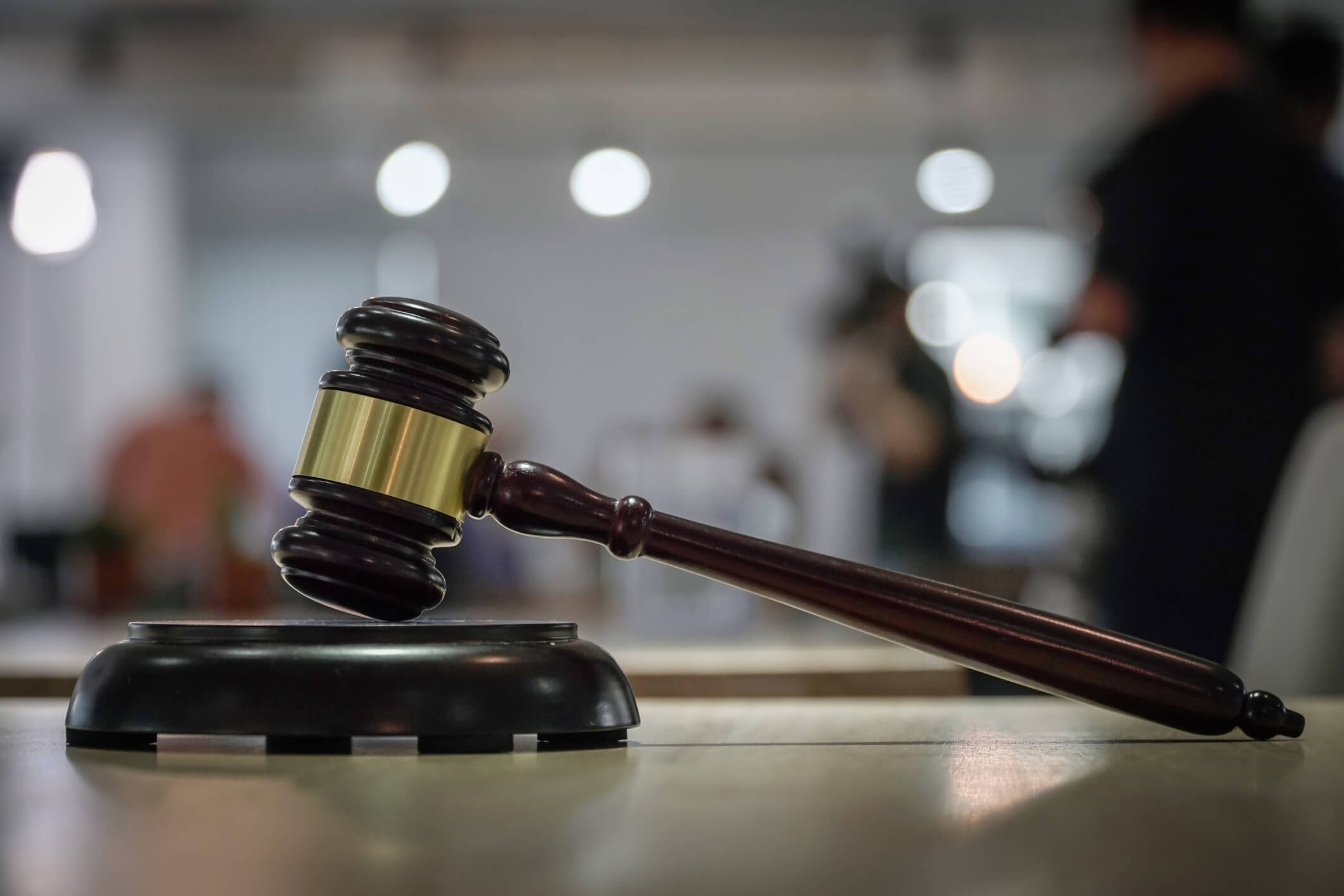
CARECEN and Safe Passage Project are just a couple of the numerous organizations attempting to address the need for legal counsel for those facing deportation. Sister Janet Kinney created the Long Island Immigration Clinic in order to provide legal education to immigrants in the event that they are unable to acquire an attorney.
“This was really a result of the great need of undocumented immigrants here on Long Island who have really no access to legal representation,” Kinney said. Since the government will not pay for immigrants to have access to counsel as they do for criminal defendants, people must pick one of three options: find a pro bono attorney who has an opening, find a way to pay for an attorney, or represent themselves in court. This is what the clinic is doing: training immigrants on how to defend themselves in removal hearings.
“They’re not coming here with a huge savings account,” said Dena Spanos, Long Island Immigration Clinic program coordinator. “Most of them are coming here with the clothes that they’re wearing and some documentation and that’s it.”
The lack of funds puts people at risk of being scammed by notarios or notaries. These are non-attorneys who charge immigrants money to provide them with legal representation that they are not authorized to provide.
“Not only are these unaccredited and unlicensed individuals not authorized to provide legal advice,” Jordan said, “but often, the legal advice that they give is extremely harmful to immigrants who recieve it, either as a result of incompetence or outright fraud.”
Although access to council remains one of the biggest struggles for Long Island immigrants, the immense backlog of cases only further complicates the process. According to Jordan, it can take many years for a case to even be heard in court.
“It’s a huge problem because without being able to apply for a green card, they won’t be able to get social security numbers,” she said. “Then, there’s their access to employment and there’s access to public benefits, higher education, driver’s licenses.”
The immigration court backlog was 1.6 million in February —the highest it’s ever been, according to Kinney.
“With only 550 immigration judges around the country, it puts an enormous burden on all the judges presiding to try to get the cases resolved fairly, but efficiently,” said Mimi Tsankov, an immigration judge seated at the New York Federal Plaza Immigration Court. “We simply don’t have enough immigration judges to handle the workload.”
This backlog can cause major problems for immigrants who are at risk for deportation because asylum applications must be filled out one year after their entry to the United States, but many people are unaware of how the asylum process works and are not adequately informed. This results in people missing deadlines and being at risk for automatic deportation. The Covid-19 pandemic only exacerbated this problem.
“For many, many months cases just had to be adjourned to a new future hearing date,” Tsankov said. “So, there were a lot of delays and the backlog grew.”
Once courts were able to open again, proceedings were held virtually, using Webex to connect judges, attorneys, and immigrants. This virtual platform has been found to be more convenient by many, especially people residing on Long Island. There are no immigration courts located on Long Island, so all people seeking asylum must travel to downtown Manhattan for their hearing.
“Remote access to hearings has been incredibly useful in terms of getting pro bonos to take cases and clients who struggle with transportation,” Tsankov said.
Rodman Serrano, immigration organizer for Make the Road New York (MRNY), believes that the immigration system itself is broken and needs to be reformed. MRNY is a nonprofit that works to build power in communities and fight for respect, dignity, and policy changes.
“One of the long-term goals that we have and that we’ve been fighting for, for many years, includes helping to fix our broken immigration system,” Serrano said. “The last time we had immigration reform in this country was 1986.”
The Vera Institute of Justice, a nonprofit organization that pilots programs to end the “overcriminalization … of people of color, immigrants and people experiencing poverty,” as stated on the Vera Institute’s website, launched Fairness to Freedom: The Campaign for Universal Representation on April 26. This campaign pushes for federal legislation that establishes a universal right to federally funded legal representation for people facing deportation.
“We are grateful that in the recently enacted fiscal year 2023 budget, New York State’s funding for immigration services was increased to $20 million,” said Shayna Kessler, state advocacy manager for Vera. “But there are still thousands of people across New York who are forced to fend for their lives in highly complex immigration proceedings without a lawyer.”
Until this happens people like the single mother with the crying baby, the two sisters clutching each other, and the elderly man with his cane, risk being deported back to countries where they may face unspeakable violence if they are not able to attain adequate legal representation. According to Jordan, 85% of immigrants with legal representation are granted asylum as opposed to the 13% of people without representation. Only 16.5% of immigrants had legal representation in removal proceedings, according to the Transactional Records Access Clearinghouse.
“I think increased funding across Long Island would have a tremendous impact on people’s lives,” said Megan Elman, a staff attorney at CARECEN. “They are so resilient and strong. They persevere in the face of incredible obstacles to fight their removal cases [and] it could at least help people while they are going through this unjust system.”
Sign up for Long Island Press’ email newsletters here. Sign up for home delivery of Long Island Press here. Sign up for discounts by becoming a Long Island Press community partner here.




